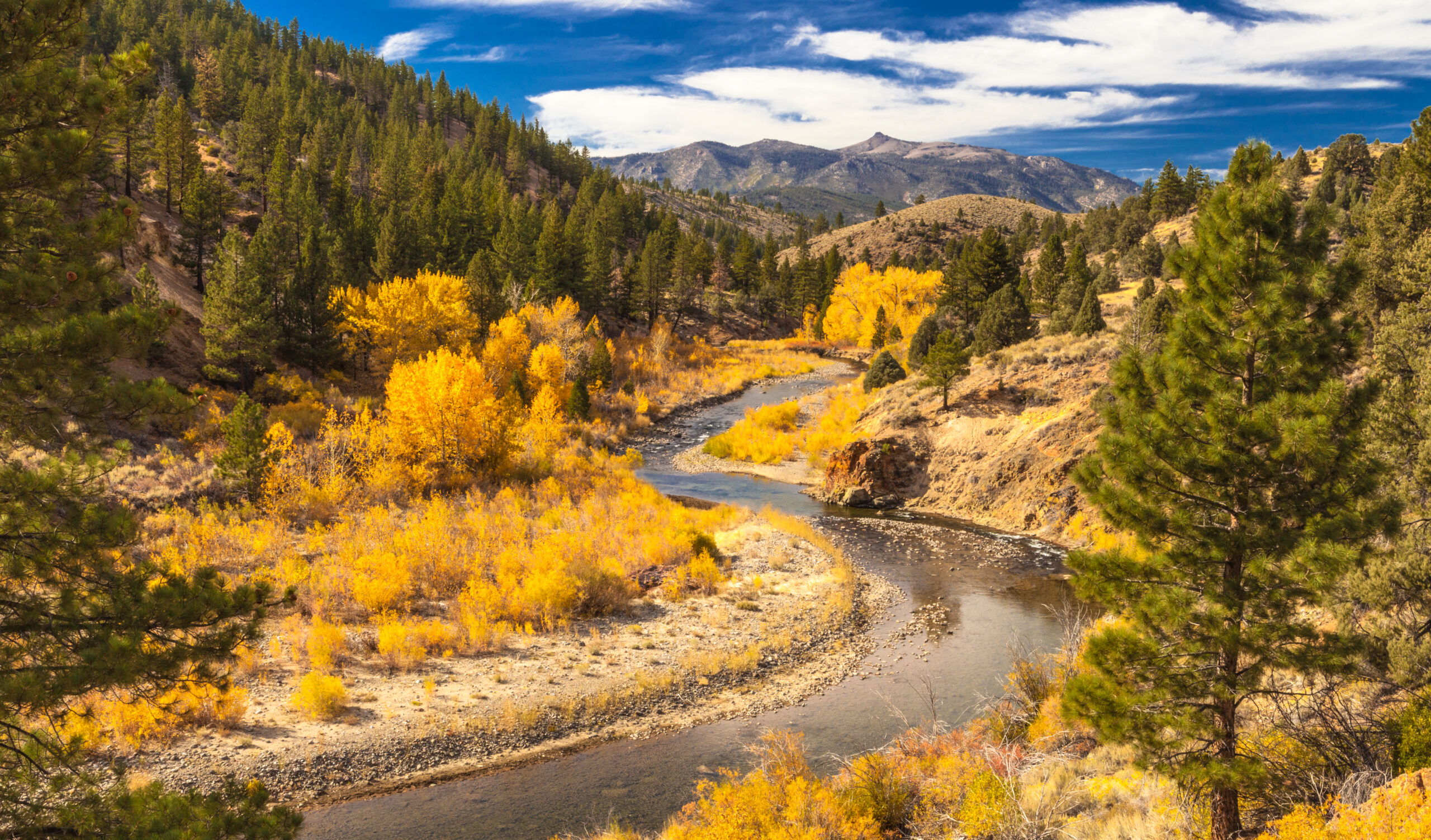The Abridged version:
- Aspens put on a show of color in fall.
- Forest management practices may threaten their survival.
- The trees can be found along creeks and lakesides.
Any Central Valley resident making the drive to the Tahoe Basin cannot help but notice as the grasslands and chaparral give way to blue oaks and gray pines, until eventually the pines and firs cover mountainsides visible from the highway.
But many visitors may not know that tucked within Tahoe’s sea of evergreens are isolated stands of quaking aspens, their round leaves trembling in the wind, making a rustling sound that gives the trees their name.
In the fall, those aspens turn a brilliant yellow with a dash of red and orange, a vivid palette that contrasts with the deep green conifers dominating the landscape.
Granted, this is not New England, where you can hardly avoid the vast deciduous forests famous for their fall colors. Tahoe’s aspens are more scarce. That only makes spending time among them more precious.
“The aspen is rare in the West, so when you see it, that’s special,” said Pascal Berrill, a Cal Poly Humboldt professor who studies aspens and lives part-time in South Lake Tahoe. “There’s nothing better than catching the fall colors.”
Those colors are not inevitable. While aspens and conifers are both native to Tahoe, for most of history they coexisted in a delicate dance. An aspen grove would establish itself, and then the firs and pines would start to encroach. Since the conifers grow taller and reproduce more easily, they would eventually reduce the size of the aspen’s territory. Then a fire would roar through and destroy the conifers, allowing the aspen grove to expand again.
Berrill and a team of researchers documented this pattern by studying the forests around Mount Lassen. They found that over a 76-year period from 1941 through 2017, aspens did better in areas burned by wildfires and grew the most in places that burned more than once. Where fire was absent, aspens actually fared worse at the end of the period than at the beginning.
That research suggests that current forest management practices may threaten the aspens’ future. Limiting logging and controlling wildfires may be necessary for other reasons, but these tactics give conifers an advantage in their tug-of-war with the aspens. If we don’t thin the forests in and near the aspen groves and use controlled fires to reduce the growth of pines and firs, Tahoe’s aspen groves will likely disappear within a century, Berrill said.
“They’ll hang in as long as they can,” he said. “But they need sunlight, so if you starve them of sunlight, then they’ll be gone.”
The aesthetic qualities of the aspen are not its only value. Unlike conifers, aspens are hot spots of biodiversity. They promote vegetation that attracts insects, which then draw birds looking for food. Bats like to make their homes in aspen cavities. Small mammals cluster near aspens even within landscapes dominated by conifers.
Where to see fall colors in Tahoe
Aspens won’t be gone tomorrow, but it’s still a delight to see them whenever you can. They thrive in moist soil, so it’s easiest to find them along creeks and lakesides. In Tahoe that means places like Spooner and Fallen Leaf lakes, Paige Meadows and along the shore of Lake Tahoe at Zephyr Cove and Taylor Creek. There are also stands on Mount Rose and Luther Pass, where snow provides abundant moisture as it lingers and melts. Just outside the Tahoe Basin, Hope Valley is stellar, with willows mixing among the aspens in the Carson River watershed.
The peak season is about to arrive. Fall’s cooler temperatures and shorter days signal that winter is coming, prompting the trees to stop producing the green chlorophyll that is essential to their summer growth. As the chlorophyll that remains in the leaves breaks down, its disappearance reveals the yellow pigments that have been there all along. Some trees can also produce red and orange pigments in the fall, adding to the splendor.
The quality of the fall color is affected by the amount of heat and moisture during the growing season. Dry summers cause the leaves to die around the edges, usually leading to poor color in the fall. The weather in the fall, meanwhile, is an important factor in shaping when the change is triggered and how long the colors last.
“If you have cool weather, with gradually cooling temperatures, you get the best color,” said Janel Johnson, a former botanist for the Nevada Division of Natural Heritage. Aspen at higher elevations change colors sooner because the nights are colder. “But if you have a sudden deep freeze, it can kill the leaf cells entirely, and they just turn brown and fall off,” Johnson said.
“You can’t just say, ‘Oh, go to this place on this day, and you will definitely have fall color,’” she added. “It seems like a simple thing – the leaves turn yellow – but there are a lot of factors at play that affect when that happens.”
Fall colors in Tahoe – Downloadable PDF
Daniel Weintraub is a regular contributor, writing Tahoe Loco for Abridged.

